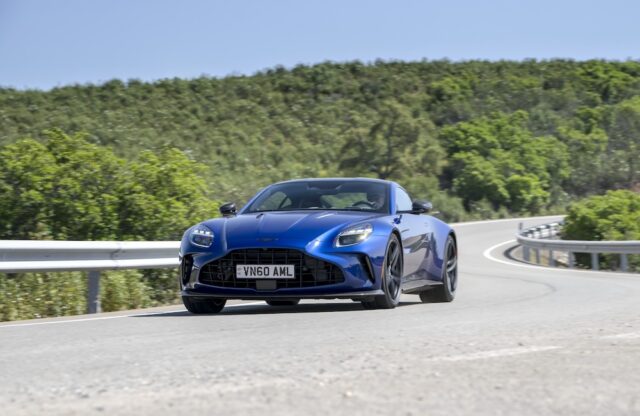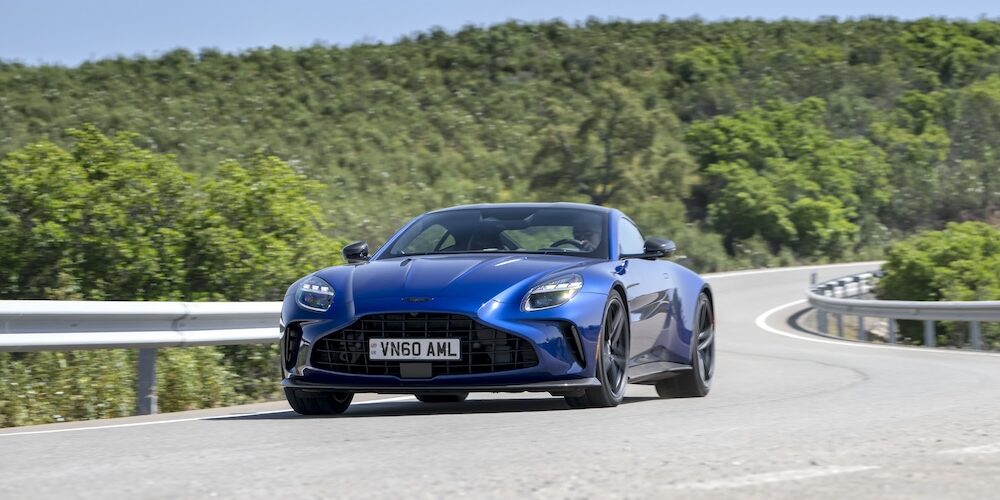The outgoing Aston Martin Vantage was pretty good wasn’t it? I remembered it from 2018 as being extremely quick, a little twitchy occasionally and let down only by the slightly clunky interior styling and those odd glass gear selector buttons that the British marque clung on to for so long.
And the looks? Pretty good, although the shallow headlights and slightly featureless sides gave it an oddly bland appearance – at least, as far an Aston goes.
Anyway, I borrowed a 2023 model of the ‘outgoing ‘old’ Vantage to make sure I’d remembered correctly. And – what do you know! – it was deeply impressive and extremely quick. I looked up what I’d written about it back in 2018, and I was full of praise for how much of an improvement it was over the previous generation. I had also noted what a difference the E-diff made to the traction and handling. One thing that didn’t really occur to me in 2018, or this time revisiting the outgoing model, was that it needed more power…
So what’s the headline news on the new Vantage? More power! Eeek! A mind-bending 665PS and 800Nm (655bhp and 590lb ft) translates to a 30 per cent power hike from the AMG 4.0-litre twin-turbo V8, a 202mph top speed and a 0-60mph time of 3.4 seconds. One of the engineers at the launch joked that anyone asking for more power than this should be arrested. Remember that quote for the next special edition or upgrade launch… Perhaps this is compensating for the loss of the wonderfully over-powered V12 Vantage, leaving the current DB12 to continue on its more sophisticated way as more of a grand tourer.

Partly to cope with the big hike in power, but equally to further improve the precision of the handling, the aluminium structure is stiffer, especially at the rear (by 29 percent) under cornering, thanks to much increased bracing between the rear strut towers. The electric power-assisted steering has been tuned for greater feel, and the final-drive ratio has been lowered for punchier acceleration through the eight-speed ZF automatic transmission, which itself is now faster shifting. The electronics controlling ride, handling and steering have been updated, taking advantage of new, faster processors.
I asked Aston’s director of vehicle performance, Simon Newton, about that, and he said that quicker processors are making a huge difference to how the Aston engineers are able to control traction and suspension, having much more affect in those areas than to engine response. More on that in a moment…

What you’ll see immediately, though, is a more characterful-looking car. It’s tauter and more muscular, with additional styling features, such as the side strake on the front wings and the more sculptured rear bumper. The Vantage has also gained frameless door windows and mirrors; the latter give a much better rearwards view and look slicker, too.

Anyone who asks for more power or performance should probably be arrested


The biggest difference, though, is the front end, which features a 38 percent larger front grille and extra intakes under the new, more interesting-looking Matrix LED headlights. Turns out that the bigger grille was needed to cool the more powerful engine. To allow the increase in size while keeping the styling balance correct, the Vantage has been widened by 30mm. Understandable, but this is a sports car, and I’m not sure we needed it to grow. Was it worth the increase?
Well, let’s just say that no one will really need more power than this. My first try of the new Vantage was on Spain’s Circuito Monteblanco, which is tight and twisty to the point that the Vantage’s power was almost a liability. Acceleration between corners was ballistic, especially down the 1km straight, at the end of which the speed could be brought back down just as rapidly by the huge carbon-ceramic discs. I know I could have braked later, but self-preservation/cowardice/lack of skill very much overcame bravery.

Usually, after a few laps in just about any road car, most drivers start to lust for just a bit more power and a lot more braking power. Even after four full sessions on the track in the new Vantage, I never felt like that, although I was a long way off being the fastest or smoothest of the Vantage drivers that day.
The Vantage now has five drive modes, affecting engine and transmission response, along with firmness of suspension. There’s Rain, Sports, Sports+ and Track, as well as an individual custom setting that owners can tailor to their own tastes.
Predictably, Sports didn’t feel quite aggressive enough on track. On the Sports+ drive, setting the Vantage coped well with the bumps and ripples of Circuito Monteblanco, while in Track mode it was sharper but more likely to be thrown off line. The Vantage has a new trick, though, and that’s a traction-control setting that can be dialled in between one and nine to increase or reduce intervention.
I got brave/stupid enough to try ‘8’, and was rewarded with a few heroic-looking slides followed by a near-spin. I quickly turned it back to ‘5’… Normal service – mostly understeer – was resumed. Less extreme adjustments to the setting followed, and proved just how good the feature can be.
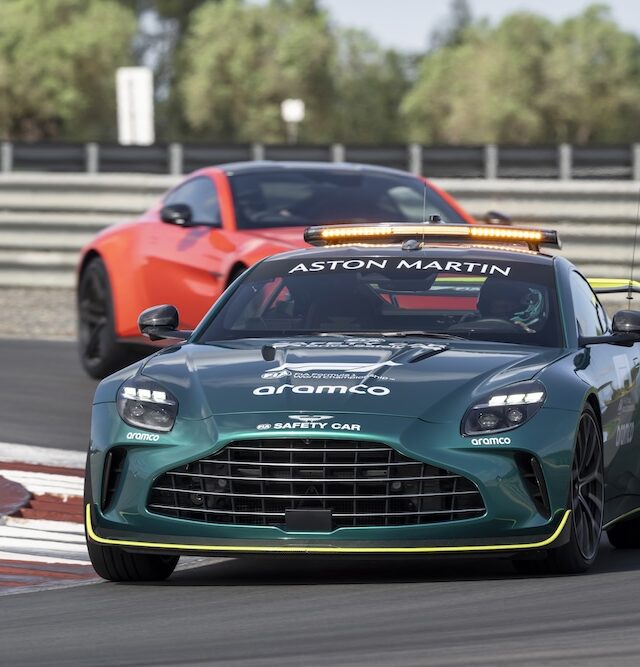
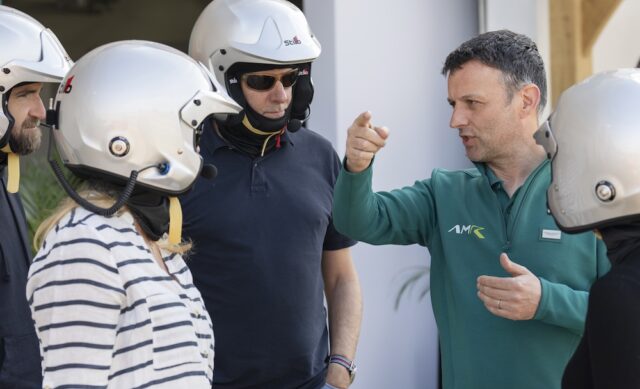
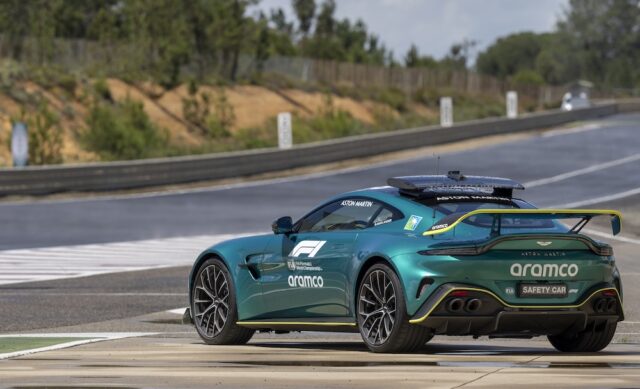

Aston Martin’s Le Mans class-winning driver Darren Turner was on hand at the track, ostensibly to drive the new F1 pace car Vantage and guide drivers around for their first few laps. He was soon chatting about the road version too, though, and how perfectly the electronics hold the car just on line without feeling too nannying or crude in its application. There was one corner, a long, fast, left-hander, through which Darren described how well the Aston would hold its line almost against the odds; trying it faster after talking with Darren, I could see what he meant.
Honestly, five years ago this level of subtlety in the stability control wouldn’t have been possible; that’s because of the new processors and the improved systems.
One last point before the more important job of trying the Vantage on the road, and that’s Darren and Simon Newton both explaining that there’s been much more information flow – both ways – between the development of the road car and the now highly successful GT3 race cars. It really shows.
The might not have bode well for the Vantage on the road, of course, but actually it’s an improvement again over the outgoing model. It would have been a harsh critic to really moan about the 2018-on Vantage, but sometimes the mostly excellent ZF eight-speed transmission could be caught out (even the DB12 has this problem to an extent), the electrically assisted steering could feel remote at times and the ride was occasionally harsher than expected – although more comfortable than the outgoing and much-missed hot rod that is the banzai V12 Vantage.
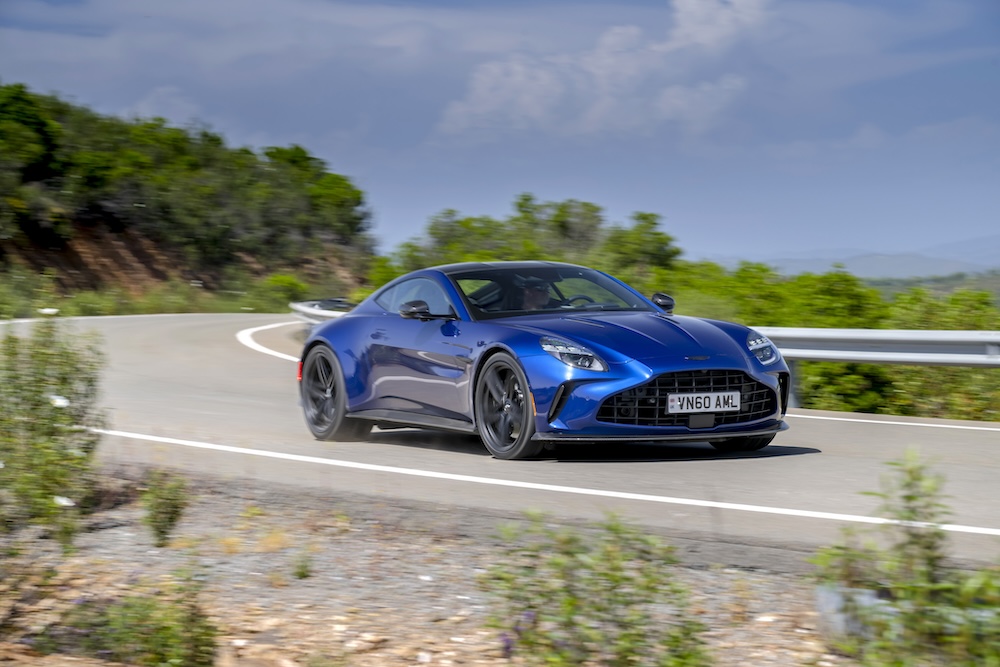
The comment that “anyone who asks for more power or performance should probably be arrested” really rings true on the road. Frankly, there’s a pretty good chance of being arrested if it’s used carelessly even as it is. There’s never a problem with power delivery, either: the torque is seamlessly immense and the lower overall gearing helps to improve the response still more, aided and abetted by a faster-changing transmission.
As ever with modern cars, it’s the ride that’s likely to be most on the edge. Increased power usually requires firmer suspension to keep the car controllable, but the new Vantage just about gets away with it: once again, the response of the active suspension must have a lot to do with this.
In Sport setting, the ride is firm; in Sport+, it’s very firm but never uncomfortable. The biggest complaint is that there’s a lot of tyre noise over particularly rough surfaces, but the grip from the custom-designed Michelins is outstanding. There was never a time in my road drive when grip through corners was a problem, and if there had been, I probably should have been arrested. But rain in Spain thankfully never came during my stint on the Vantage launch, so I can’t yet tell you how twitchy or not the new model will be on slippery surfaces. I’d predict that the electronics will do much to keep it in shape, even with all that power.

On the road, there’s more time to appreciate the transformation of the interior, which does bring home just how bitty the outgoing Vantage’s interior looks. The seats are excellent, the high-quality switchgear and haptic buttons in place of touchscreen controls (just like the DB12’s) come as a huge relief, and the centre console is a pleasure to look at. And when you stop, another look around the car will soon remind you of the more characterful styling of this new model, from that new nose to the revised, more aggressive tail.




Last year, Aston Martin made much of its planned move both upmarket and along the performance scale, aiming for Bentley levels of luxury as a brand, while giving levels of performance only a little behind that of Ferrari. It seemed an unrealistic aim initially, but on this trajectory, with the DB12 and the new Vantage, it’s beginning to look more likely. Another new model later this year will really show that intent.
It’s always been hard not to like Aston Martin, but that used to involved forgiving its cars a few infuriating flaws. With so many of the flaws are ironed out, it feels like the marque’s future is looking promising.
Find out more here.
